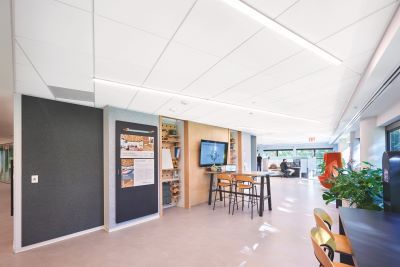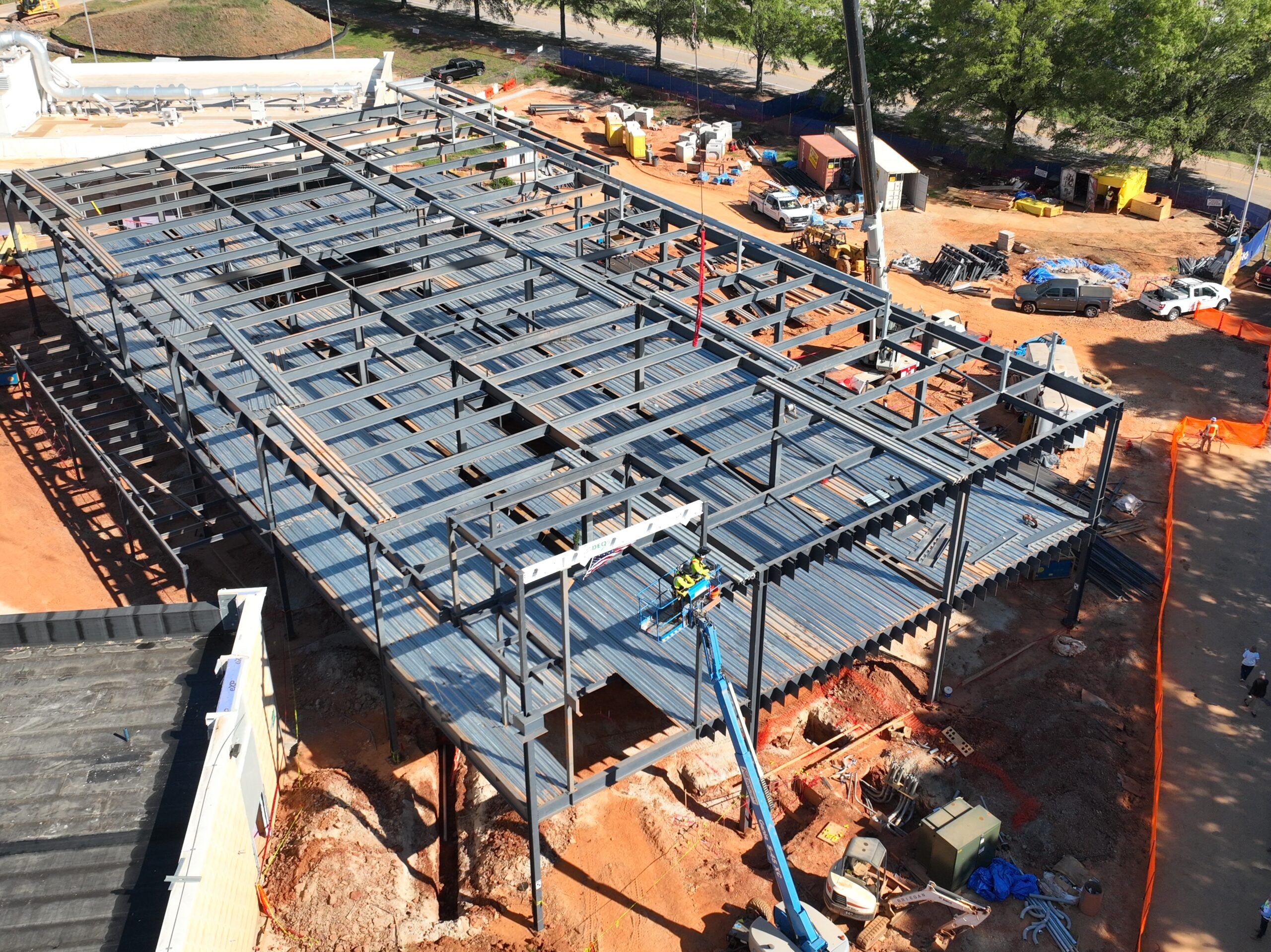Armstrong World Industries is working to make sure key players throughout the construction and renovation industry—including architects, designers, and facility owners and operators—are taking advantage of potential tax credits, deductions, and rebates when they install energy-saving ceiling panels. Thanks to recent innovation pairing mineral fiber ceiling panels with phase change material technology (PCM), architects, designers, facility managers, and other key players in construction and renovation projects are re-thinking the role ceilings play in supporting environmental objectives—especially energy savings. As a space warms—typically during the day when it is occupied or receives sunlight—the crystalized PCM encased in the ceiling gradually dissolves, passively cooling the space while it absorbs heat. As the room cools at night or during low-occupancy times, the stored heat is released into the space and the PCM re-solidifies. In this way, heat transfers naturally into and out of the ceiling panels at 72 degrees, allowing it to be effective for both cooling and heating.
Energy Savings of up to 15%
Advantages of PCM ceiling panels stem from the fact that they support thermal comfort with no mechanics, energy expenditure, or fossils fuels to burn! A valuable, sustainable solution for a world prioritizing decarbonization, ceiling panels with PCM technology can reduce energy costs and consumption by as much as 15%*.
By enabling energy savings, these ceilings offer advantages including:
- Reduced reliance on fossil-fuel powered HVAC systems
- Less wear on HVAC systems—critical to facilities with aging systems and strict budgets
- Improved thermal comfort—especially well-suited for changing climates or environments with daily hot-cold fluctuations
- Ability to enhance indoor environmental quality with features like acoustical sound blocking and absorption
- Easy installation and little-to-no maintenance
Energy saving ceiling products also fit into the thermal comfort portion of the WELL Building Standard™ and can contribute to energy and atmosphere credits for LEED®.
Up to 50% in in Tax Credits
While the above advantages can work to help a facility realize ongoing savings related to lower energy consumption and less reliance on mechanical heating and cooling—a project owner can get a “head start” on cost benefits because PCM ceiling panels qualify for certain tax credits. Projects utilizing energy-saving ceiling panels may qualify for Investment Tax Credit (ITC) 48E, which was introduced under the Inflation Reduction Act of 2022 and offers tax incentives for investments in clean energy technologies. Because of their thermal energy storage properties, most projects using PCM ceiling panels may qualify:
- Up to 40% federal tax credit
- Additional 10% tax credit if the project is deployed in an “Energy Community.” (i.e., a Brownfields site or fossil-fuel-dependent community)
When investing in energy-saving ceilings for a project, consider a solution that helps you maximize tax savings opportunities. For example, when installing an Armstrong Templok® Energy Saving Ceiling, the ceiling panels, and associated grid, trim, and labor all qualify for tax credits under ITC 48E. Moreover, these panels are made in the U.S.A. of domestic and global content, meeting a requirement for additional tax savings**.
Qualifying energy saving ceiling projects include those of taxpayers and non-taxpaying entities and span multiple sectors, including:
- Public—such as government entities
Feature Image Courtesy of:












